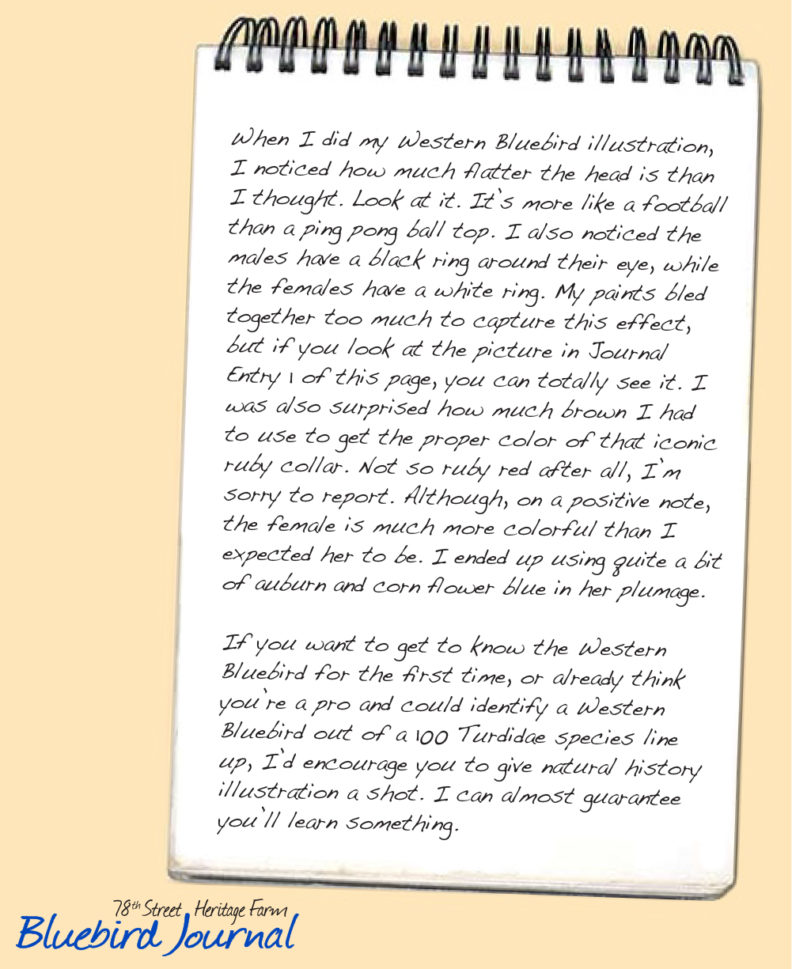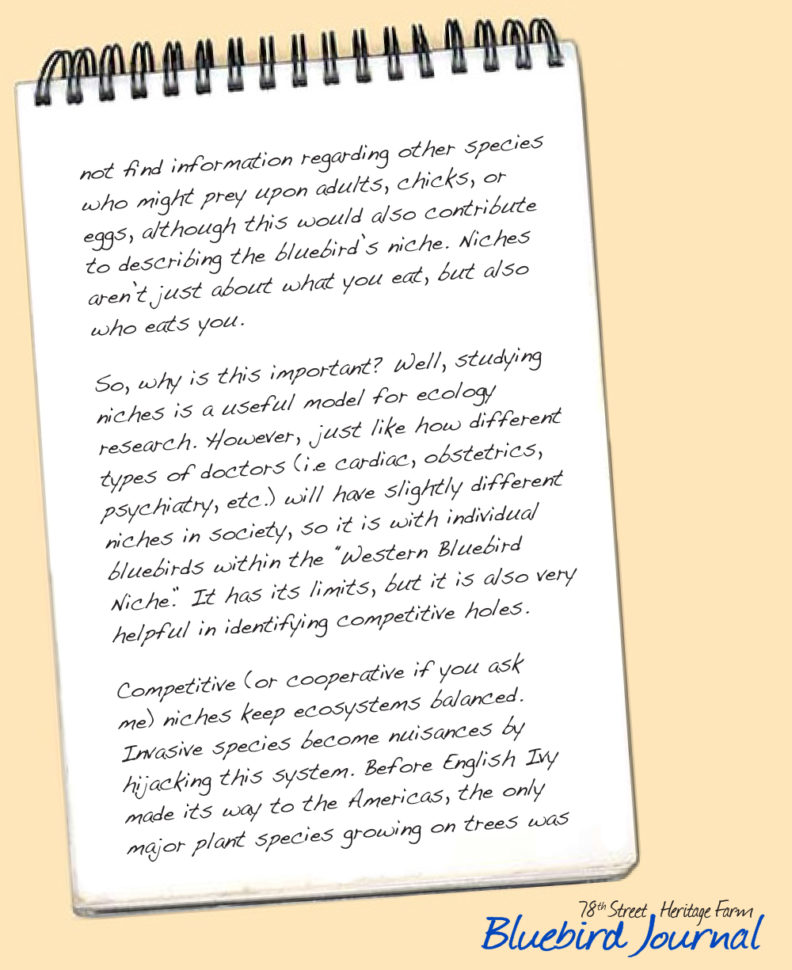Master Gardener Program
Erika Johnson, Program Coordinator
erika.d.johnson@wsu.edu
(564) 397-5738
TEXT-ONLY version of our bluebird journal.

Hi! I’m Erika Johnson, coordinator of the Washington State University Master Gardener program in Clark County, Washington. In the summer of 2011, two Western bluebirds (Sialia mexicana) were spotted at the Heritage Farm. Not commonly seen in this area, this page documents the attempts to support their nesting and use of the 79-acre farm property as well as other suitable habitat in Clark County.
If you spot Western bluebirds in Clark County, please contact the WSU Clark County Extension office and let me know! We would love to encourage them and develop habitat for them in this area!
Erika Johnson, Master Gardener Coordinator
WSU Extension Clark County
(564) 397-5738
Journal Entry 1

Western Bluebird Range
See the Western Bluebird range map. And check out the Cornell Lab of Ornithology’s All About Birds website to learn how to ID bluebirds, about their habitat, and their food preferences.
Fun Fact — Western Bluebirds are among the birds that nest in cavities—holes in trees or nest boxes. But look at their bills—they’re not equipped to dig out their own holes. They rely on woodpeckers or other processes to make their nest sites for them. This is one reason why dead trees are a valuable commodity in many habitats.
Journal Entry 2

Nesting Box Placement Is Important
Hubert Prescott Bluebird Recovery Project shared that boxes should be about 150 yards apart from each other, facing an open, grassy, mowed area. And, in order to make the boxes just right for the cavity-dwelling bluebirds, the access holes should be small, with a 1-9/16” round opening entrance.
Nesting Box Plans
If you wish to build a Bluebird nest box yourself, there are plans available at Hubert Prescott Bluebird Recovery Project or at the North American Bluebird Society website.
Journal Entry 3

Journal Entry 4

Western Bluebird Eggs

This is what we’re hoping for in the way of nests inside of our boxes — with eggs!
Learn about the types of nests other birds build at NestWatch.
Journal Entry 5

Get To Know Western Bluebirds
The Western bluebird male is known for its bright cobalt blue feathers, combined with a rust/red band around its neck and on its upper chest that is unique to the bluebirds. Females have gray/blue coloration with an orange/chestnut wash on their chests.
Adding to their appeal, the Western bluebird’s song is very pretty.
Compare Western Bluebirds to Jays

Western bluebirds are smaller than the blue and gray scrub jays (Aphelocoma californica), see photo in journal entry artwork above, which are more abundant in this area. Scrub jays have a raucous vocalization style compared to Western bluebirds’ quieter, more musical call.
Also prevalent locally, especially in wooded areas, are the deep blue and black-headed Stellar’s jays (Cyanocitta stelleri) which are much larger than Western bluebirds and sport a pointed topknot on their heads.
Journal Entry 6

Journal Entry 7

Journal Entry 8

Western Bluebird Habitat
Western bluebirds like open woodland areas, both coniferous and deciduous. They nest in tree cavities including old woodpecker holes, natural cavities, and of course, nesting boxes.
They like a perch 40-100 feet from the front of their nesting box. It provides a safe place for babies to land when learning to fly, and is also a place for parent birds to guard the box to avoid predation.
Bluebirds’ diet consists of insects, earthworms, snails, and small berries and fruits. So we planted native shrubs to provide food and habitat not only for the birds, but for the insects they eat.
We planted these shrubs:








Learn more about landscaping with native plants.
We are still hopeful that bluebirds will return for a visit!
Journal Entry 9
Introducing a New Contributor
McKenzie McCann is an M.A E.d in Environmental Education student at Prescott College in Prescott, AZ. She is interning with the Master Gardener program and its Western bluebird project as a part of her coursework. Stay tuned for some great blog entries from McKenzie over the next few months!






Journal Entry 10







Journal Entry 11





Journal Entry 12






Our pages provide links to external sites for the convenience of users. WSU Extension does not manage these external sites, nor does Extension review, control, or take responsibility for the content of these sites. These external sites do not implicitly or explicitly represent official positions and policies of WSU Extension.
| WSU Clark County Master Gardener Program 1919 NE 78th Street • Vancouver, WA 98665 (564) 397-5738 |

